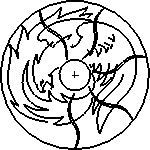
|
Just like you would expect
|
Every STS system is tested and run with a simple thermal source
prior to installation.
|
The point of this discussion is to elaborate a bit on the
entire range of thermal applications. All that's needed to adapt the STS
to any temperature range is the appropriate heat exchangers. Yes I realize
we're making it sound like heat exchanger design and engineering is a trivial exercise.
It is not, but it is a well defined discipline, and there are plenty of experts
around. We'll work with your experts or supply our own to design the
optimum system for your situation and needs.
Being from New England, we use fuel-oil and natural-gas fired boilers, and a
simple heat exchanger. We test the systems starting at 120F (potable
hot-water), then at ~195F-220F (domestic hydronic), then finally in the
450F-550F range (typical for solar concentrators). The point is that every
system is naturally adapted to this mode of operation. ( FYI: Did you know
that automobile gasoline engines are test run on natural gas? ) Could we
operate at higher temperatures? Sure, what we'd be getting away from is the
maintenance free reliability of the commercial STS, but if you've got that much
waste heat, then you're prepared for the inevitable need to maintain the piece
of equipment that is making that heat in the first place.
|